It is common knowledge that art is subjective, and people have varying preferences regarding it.
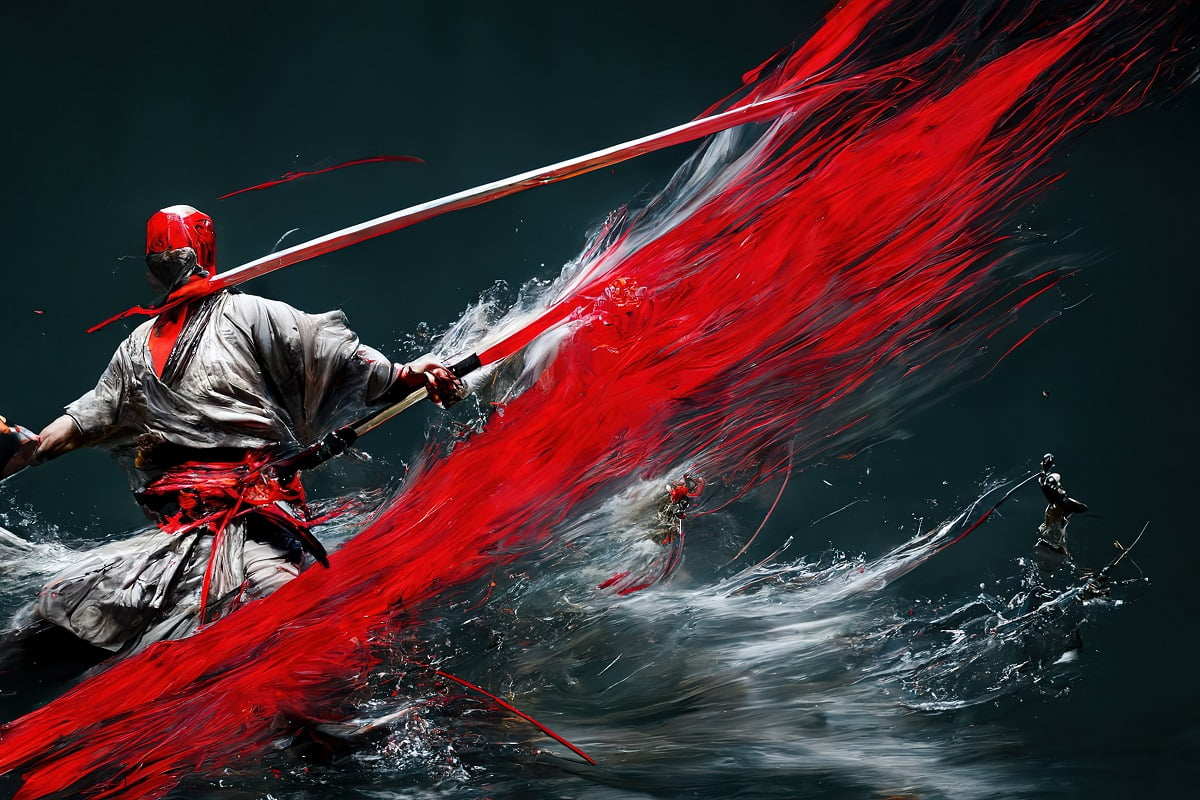
While some prefer traditional oil paintings, others might find modern art more appealing. And digital art is one of the newest types of art that are quickly becoming popular. Originally known as new media art or computer art, digital art includes all types of art produced using computers, software, and other electronic devices.
There are several reasons why digital art is so popular, the main one being that it is more economically viable than traditional art. Also, unlike traditional art, it is possible to correct mistakes easily in digital art.
But digital art itself can be divided into several types of art, and if you’re interested in this field, learning about the various types can be highly beneficial. That’s why we’ve decided to put together this guide on the different types of digital art.
So, check it out now!
Different Types Of Digital Art

Digital art can be classified into two broad categories, regular digital art created using art software and a graphics tablet and art created using Artificial Intelligence. Both styles of digital art include several techniques, so let’s look at the regular types of digital art before moving on to the methods that use AI.
1. 3D Digital Painting And 3D Sculpting

One of the most popular types of digital art is 3D painting, an extension of 2D printing and closely related to sculpting. In this art form, artists apply various textures, paints, and shading to 3D models to create realistic and lifelike representations of people and objects. Leading animation studios such as Pixar generally use this art technique, and even Japanese studios like Studio Ghibli have shifted from 2D to 3D painting.
3D digital painting can be used to create realistic or stylized characters, while 3D sculpting allows artists to manipulate the created object, unlike traditional sculpting. This makes this art form especially suited for animation, as such objects and characters can be easily created before placing them in a scene.
2. 3D Modeling

While many people are confused between 3D sculpting and 3D modeling, both are distinct from each other. 3D modeling involves creating points in a digital 3D canvas similar to vector art, between which various planes and lines are created using a software.
These planes are grouped together to form a mesh, and it is this mesh that the artist manipulates to create objects. Also, this mesh can be animated, which is how 3D characters are animated.
3D modeling is used to create graphics for all modern games and to create special effects in TV shows, movies, and architectural mockups. The most popular 3D modeling software includes Blender, Maya, and 3DS Max.
3. Matte Painting

Matte painting is similar to standard digital painting but also incorporates the use of 3D modeling and photography for creating photorealistic environments and landscapes. This type of digital art is commonly used for movies where a realistic background is needed but may be unavailable in real life or may be too expensive.
It involves creating backgrounds that blend seamlessly with the scene through the use of photographs, 3D modeling, and digital painting. Matte painting allows movies to have breathtaking scenes that look fantastic while still retaining an element of realism.
This technique is also closely related to photo manipulation, as both forms utilize similar techniques and serve a similar purpose. Both involve the use of photographs, 3D modeling, and digital painting, but photomanipulation is more commonly used for character design.
4. Structured Drawing

Structured drawing is a digital art style that involves creating art pieces using mathematically described strokes and shapes. This means that it results in the creation of vector art instead of raster art that can be scaled easily without any loss of detail.
While traditionally structured drawing can be done using just a mouse and keyboard, modern software developed for the purpose can easily mimic various line drawing tools. This means that hardware like pressure-sensitive drawing tablets can be used for the purpose effectively.
Structured drawing generally results in an art style that leans closely towards graphic design instead of traditional painting. Also, there are software especially suited for structured drawings, such as Inkscape, Adobe Illustrator, Gravit Designer, and Affinity Draw.
5. Pixel Art

Pixel art makes use of tiny basic shapes to create highly intricate images and, in modern times, is associated closely with the gaming industry.
But it did not originate as a form of digital art, as the famous Spanish artist Salvador Dali often used pixel art in his traditional art pieces. And after that, it was first used in the creation of assets and sprites for early computer games since it did not require a lot of memory.
That is also the reason why this art form is often referred to as 8-bit art. Pixel art can be used to create simplified and highly realistic pieces and is fairly easy to animate. Almost all mobile video games use pixel art at some level. Due to these reasons, it was one of the first types of digital art used for both private and commercial purposes.
Pixel art may be classified into isometric and non-isometric and is usually created using dedicated software like Krita or Pixen.
6. Voxel Art

While many people have heard of pixel art, voxel art is not that well-known, even though both techniques are quite similar. Instead of relying on square pixels, voxel art involves transforming the pixels into cubes which are used to create images in a 3D space. The process most closely resembles building objects using Lego bricks.
Due to its nature, the software available for voxel art is quite limited when compared to those available for pixel art. While pixel art can be created using almost any image editing software, voxel art requires specialized software like Blender. Other dedicated software available for this art style include MagicaVoxel, and there are even some free-to-use options available.
7. Isometric Art

Isometric art is quite similar to voxel art, but the major difference is that the viewing angle is restricted to 30 degrees. This means you can view three sides of the object or character created using this art style. Isometric art first appeared when architects and engineers used it for technical illustrations.
However, it has become popular for many other purposes and is often used on various websites and smartphone applications. Isometric art is also known as isometric projection and is used by artists to create the illusion of three-dimensionality in a two-dimensional space.
While it is possible to replicate this process using 3D applications, it is generally done using an isometric grid through structured drawing programs like Affinity Designer and Adobe Illustrator.
8. Digital Photography

Digital photography is among the most revolutionary changes in the world of photography and is an important form of digital art. Unlike traditional cameras, digital ones do not require the use of film, which effectively removes the limits on how many images and videos can be captured. Additionally, a digital camera can filter, zoom, and manipulate images in multiple ways.
But digital photography is more than just taking photos of objects; the real work comes after the photos have been taken. Photos taken using digital cameras can be easily transferred to your computer and can then be edited. And software like Lightroom and Adobe Photoshop play an important role in digital photography for editing images to make them more appealing.
Such software is also used to enhance images by adding and removing elements as required.
9. Vector Painting

Besides being a common image format, vector is a term used to describe a form of digital art. It involves using geometrical formulas to capture the various shapes and lines that make up an image. Vector art usually uses features like grouping, embossing, flipping, adding or removing transparency, and others through different vector art software.
The biggest reason for the popularity of vector art is that vector art pieces can be resized as needed without affecting their sharpness. This means that an image can be made infinitely larger, and there won’t be any pixelation issues to worry about. That is also why artwork like logos is generally created using this digital art.
Apart from being resizable, vector art can be generated multiple times without any loss in resolution and can even be edited by conveniently adding and removing elements like color. Due to this reason, many digital artists convert their artwork into vector images, which is why vector art is a popular element of graphic design.
10. 2D Animation

Traditional 2D animation is an important form of digital art that creates the illusion of movement in two-dimensional art pieces and is used in almost all cartoons and games. 2D animation can be categorized into skeletal-based and frame-based animation.
Frame-based 2D animation involves drawing objects or characters multiple times, and each drawing is known as a frame. Each frame is slightly different from the previous one, and the illusion of movement is created when all the frames are played continuously sequence-wise. Generally, one second of animation requires 24 frames, which makes it a very tedious process.
To overcome this problem, skeletal-based animation was developed, in which the object to be animated is divided into different parts. The various parts are assigned bones, which can be moved individually as required, making the animation process easier. However, this makes the animation appear more artificial.
11. Raster Painting

In simplest terms, raster painting can be said to be the complete opposite of vector painting, and raster is also a commonly used image format. This art form is known as grid painting or bitmap and comes the closest to traditional art done on a canvas. Similar to traditional canvas art, lines and colors are registered individually, pixel by pixel, on the computer screen.
Since it is a digital form of traditional painting, art pieces created using this art form cannot be resized. This is because when they are enlarged, it can cause pixelation issues which is the biggest downside of this art form. Raster painting may also involve painting on top of a rasterized image, just like in photo painting.
And it can incorporate many other types of digital painting, making it suitable for 3D and 2D graphics that make use of pixels. This technique allows the creation of more organic shapes and textures, and high-resolution raster images have a larger number of pixels.
12. Photo Painting

In this type of digital art, the artist utilizes an existing photograph and paints over the various objects and characters to create a painting. Generally, larger objects are blocked using color, and details such as the features of a face are left out to create a minimalist painting. But photo painting can even be used to create highly realistic paintings and portraits.
This technique is similar to photobashing, which is another type of digital art since it can be used to add more details to existing photos or art pieces. Also, this is another art form in which both traditional and digital techniques can be used. However, photo painting is distinct from photoshopping, which involves making changes to images using art software.
In photo painting, image editing software and painting tools enhance paintings using photographs as their starting point. And it is similar to photo realism because it involves reproducing photographs on canvases in the most realistic manner possible.
13. Digital Collage

Digital Collage is a digital art style that has become popular through techniques like scrapbooking and the use of mood boards. Such boards are being increasingly used on social media platforms like Facebook and Instagram. In this digital painting style, artists compile multiple images together while employing software that allows photo editing and image splicing.
This method goes back to the period when the camera was first invented, and there can be wide variation in the style and appearance of digital collages. They can include painting techniques, 3D assets, and even photography. One of the most popular ways artists use digital collages is to create illusions through pieces attempting to distort reality.
Digital collages can be created using almost any image editing or painting software since all it does is combine images from different sources together. Before being discontinued in 2016, the Picasa software by Google was among the most popular software for creating a digital collage.
14. Integrated Art

Integrated Art is quickly becoming one of the most popular styles of digital art and involves using multiple software for completing the same painting. Alternatively, a single art program can be used to create hybrid paintings. Generally, integrated art incorporates using raster and vector painting techniques together or combining manual and computer-generated vectors.
In some cases, it can even involve using raster or vector painting methods along with photography.
Digital art software like ArtRage is popular for integrated art since it allows combining different art techniques, which is impossible with traditional mediums like a canvas. And this art form is becoming even more popular because there is no limit to the number and type of forms that can be integrated into a single piece of artwork.
In recent years, integrated art has expanded to include virtual reality elements by combining real environments with artificially generated assets. Also, other forms of art, such as music, writing, video games, films, and theater, can be considered examples of integrated art.
15. Mixed Media

Often treated as one of the extensions of integrated art, mixed media also involves combining and blending multiple art mediums. These can include pottery, painting, ceramics, photography, and glassworking. However, as far as digital art is concerned, mixed media involves combining painting and 3D modeling.
Mixed media involves applying paint to 3D models, helping provide them with a more realistic, lifelike feel, and special brushes have been developed specifically for this purpose. These brushes can help add textures, shadows, and lighting to the 3D models. Mixed media provides a sense of realism to digital art while combining both traditional and digital assets most effectively.
16. 2D Digital Painting

2D digital painting is the most well-known type of digital art and involves using a tablet, stylus, and digital art software to create digital art. This art form aims to provide digital artists with an experience close to traditional painting, along with the advantages of the digital medium. Because of this, it can often be difficult to distinguish a digitally created piece from a hand-painted one.
Just like traditional painting, 2D digital painting involves the use of several types of brushes, mediums, and paints. Oil paint, watercolor, and pastels are some of the most common mediums for creating 2D digital images, and the digital artist can work in layers and edit the artwork easily. Also, most tools offer multiple settings that can help provide a highly customized painting process and help enhance the overall experience.
17. VR Painting

Virtual Reality has gained a lot of traction over the past few years and has become immensely popular in the digital art world as well. And the main reason for that is the Tilt Brush developed by Google.
This tool allows digital artists to use a 3D space for painting purposes, and they can utilize multiple angles to create the artwork. The completed artwork can be viewed in the form of a 3D image or in VR.
Also, what makes the Tilt Brush so revolutionary in the digital art industry is the fact that it allows artists to paint around them easily. It also utilizes highly realistic physics and mechanics, allowing hyper-realistic images to be created. And this tool is available on almost all the popular VR platforms, which include PlayStation, Oculus, Windows Mixed Reality, and Vive.
18. 2D Computer Graphics

Computer graphics can be categorized into 2D and 3D, and the former includes images created exclusively by the computer. 2D graphics include logos, text, shapes, graphs, and more. They may either be in the form of a .gif or a .png and may even be vector images instead of raster ones.
2D computer graphics form the largest part of the digital art industry and includes all 2D art, even animations, and cartoons. This type of art led to the development of clipart and the popularity of web advertisements and logos.
Also, this digital art form may appear in 3D, such as in the case of video games, but is created using 2D shapes only. This is why it remains one of the easiest forms of digital art today.
19. Photobashing

Another one of the most popular digital art forms is photobashing, which involves combining 2D, 3D, and real-life images. In this technique, the artist paints certain portions of the artwork while including 3D textures and models in other areas. This helps create a surrealistic image that can be highly engaging and may often include a science-fiction element.
One of the more popular elements that photobashing artists utilize is cyberpunk since it can be blended easily with the more realistic aspects of the artwork. Photobashing can also be used to speed up the digital painting process or help correct certain elements in a piece, which is why it is popular among concept artists.
AI Art
The above were the traditional types of digital art that have been present since this art form became popular. However, with the advent of technologies like Artificial Intelligence, newer types of digital art have become popular. And two of the most well-known names in this field are Midjourney and Dall-E.
Both Midjourney and Dall-E are AI-powered tools that can generate various types of images, including paintings, photorealistic images, emojis, and more. They allow creating artwork from scratch using AI technology, simplifying the digital art process. Let’s look at them in detail now.
Dall-E
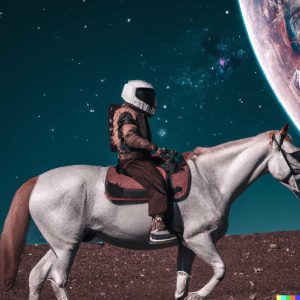
Image via openai.com
What Is Dall-E?
Dall-E is a machine learning model developed by the AI laboratory OpenAI to generate images using natural languages. This is possible since this model can understand the relationships between text and images, and it uses two processes called clip and diffusion to generate the images.
Generally, Dall-E creates photorealistic images if there are references for the concept linked to the text. But in the absence of such references, it can even create stylized images similar to digital paintings. Dall-E 2 has succeeded Dall-E and can generate even higher quality, more realistic images and combine different art styles and concepts.
How Does Dall-E Work?
The process that matches the images to the text is called clip and can be used to train the computer to understand the concepts linking the text to the images. This allows Dall-E to come up with new images of the same concepts for the text pieces, making it a truly revolutionary technology.
The tool starts generating images with the creation of random dots, which are altered into the pattern of an image.
However, in its current form, clip cannot generate high-quality images of the concepts, which is where diffusion comes into the picture. Diffusion involves adding Gaussian Noise to an image to corrupt it, allowing Dall-E to learn how to reverse the process and enhance images by removing noise.
The diffusion technique can even be used to alter an already generated image further to bring it closer to what is required. But the biggest advantage of Dall-E is that it can generate multiple variations of an image in a very short period, which even the best artists cannot.
Limitations Of Dall-E
Due to the various concerns and possibilities associated with Dall-E and Dall-E 2, these are not publicly available for general use. These powerful tools are available to only a few selected individuals, and the tool also has a few intentional and unintentional limitations.
The first among these is that while the images are highly detailed, a closer inspection can reveal that the photorealism is not perfect. It is possible to identify whether the images are real objects or generated completely using AI, and can be done by zooming in close to the images.
Another intended limitation of this tool is that you cannot generate images that have violence, illegal activities, or adult content. Similarly, it cannot be used to create images of specific people, as it can pose several risks.
Apart from that, Dall-E does not do very well in understanding the relative position of multiple objects and has trouble generating images of written words. Despite those limitations, however, this tool has enormous potential.
Dall-E and Dall-E 2 are not consumer products but research projects that aim to help create a safe and reliable AI for general purposes. In its current form, Dall-E is best suited for brainstorming concepts and ideas, which can be great for digital artists.
Midjourney
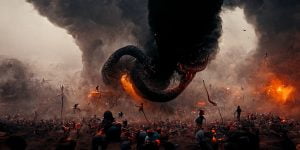
Image via creativeshrimp.com
What Is Midjourney?
Midjourney is another AI tool that can be used to generate images using text prompts similar to Dall-E. The tool is used through Discord bot commands and is currently in its beta state. It can also create images in several styles ranging from stylized artistic ones to hyper-realistic ones.
Artists can use the tool to showcase prototypes to clients while creating the artwork themselves. It can even be used to create customized advertisements, special effects, and more. Midjourney can also create highly detailed images in high resolution, and the quality of the generated images can be further enhanced.
Also, with this tool, it is possible to generate more variations from an already generated image and even upscale them.
How Does Midjourney Work?
Midjourney uses AI and machine learning to create images through text prompts provided by the user. Users need to sign in through their Discord account using a web browser or use the Discord app available on various platforms, including Windows, Android, Linux, Mac, and iPhone.
The digital tool has a free trial that provides users with 25 prompts for generating images, and for more prompts, there is a paid membership option. And the images can be downloaded to your device and shared directly with others. The Midjourney server can even be used to communicate with other people and share ideas and art pieces.
Midjourney also allows editing of the generated images by altering their colors and lighting and other aspects like aspect ratio.
Limitations Of Midjourney
The biggest limitation of Midjourney is its dependence on a bot. All queries entered by users are hosted on a single server, which makes them easily visible to everyone. This goes against the concept of the uniqueness of the idea and also makes it impossible for users to enjoy any privacy.
The only way to overcome this problem is to purchase a private subscription, which will provide you with a private chat, and the prompts will become confidential. But even in that case, the artwork created will be shown on the community feed page.
Apart from that, the images generated by this tool may not be of the same quality and resolution as those created by Dall-E. But they can be upscaled, which can help enhance them to a certain extent.
Now, let’s look at some of the different types of AI art.
Types Of AI Art
1. Fractal Art

This type of digital art originated in Middle Eastern and Asian cultures, where traditional artists created highly detailed patterns and mosaics to decorate important places like temples. However, with modern technologies, it became possible to create similarly detailed designs digitally, which eventually led to its popularity.
Patterns can be created in both 2D and 3D, and popular mathematical elements such as the Fibonacci Sequence are often used for the purpose. Fractal art utilizes mathematical equations and algorithms to create detailed patterns, and artists use fractal-generating software to do so. Also, fractal art is among the earliest examples of Artificial Intelligence, as it involves teaching computers how to create art.
A fractal means an infinite pattern, and fractal art uses the calculation of fractal objects to create an image, animation, or other artwork. Several types of fractal art exist, and the Mandelbrot set is among the most famous. Software is available for creating fractal artwork, both free and paid, and the fractal created is generally further processed using different software.
Other types of fractal art include Polynomial fractals, Iterated Function Systems (IFS), Quaternionic fractals, and Newton fractals.
The unique aspect of fractals is that the patterns are completely identical, irrespective of the zoom level. That is why creating fractals can be quite challenging since even a small change can lead to similar changes in all the recurring patterns because of the butterfly effect.
2. Algorithmic Art

Algorithmic art is closely related to fractal art and involves using certain equations or codes to create artwork. What sets algorithmic art apart from other forms of digital art is that it generally does not require any input from the artist. This means that algorithmic art can be used to create both digital and traditional art pieces that include abstract as well as hyper-realistic pieces.
The designs are generally created by the computer and can be used to create vector art as well, which does not suffer from pixelation problems. Since the artwork can easily be resized without losing graphical fidelity, algorithmic art is often used for logos, word art, and computer-generated assets and backgrounds.
Digital artists that use algorithms to create art are known as algorists, and they are responsible for creating the algorithm that creates the artwork. Algorithms can include functions, expressions, computer code, or other input in mathematical or computational forms. Also, they may be deterministic or may include random elements.
Deterministic algorithms will result in identical art every time, but elements like a random number generator or external data stream can bring some variety. While the first instances of algorithmic art date back to the 1960s, that art was created using a plotter instead of a computer.
3. Datamoshing
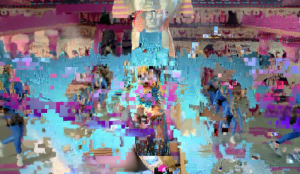
Image-via datamoshing.com
Also known as glitch art, datamoshing forms a small yet popular niche of digital art and involves using programmed glitches and layering videos and bringing them together. The finished video is a modernist example of digital art and can be visually engaging. This technique can also be applied to still and 2D images and requires the right software and programming for splicing and layering videos.
One of the developments in this field was the creation of the Deep Dream tool by Google to allow artists to datamosh images. And software like Avidemux has been specially developed for this purpose.
Datamoshing generally involves manipulating the various types of frames, such as I-frames, P-frames, and B-frames. Each of these frames serves a different purpose. For instance, I-frames can store the complete picture without needing more information, while B-frames and P-frames do not. These require some additional information from the previous or next frame, as they only contain the information required to display the change between frames.
There are mainly two methods of datamoshing. The first involves replacing, removing, or corrupting an I-frame that helps create a glitch. Alternatively, one can duplicate P-frames multiple times for the bloom effect.
4. Still Imagery

Still imagery is another form of computer-generated art and can utilize both 2D and 3D images. 2D computer graphics are created by combining 2D geometric models, text pieces, raster images, and other elements. Tools like Flash, Adobe Illustrator and other software are generally used to create still images.
3D still images are generally used for video game graphics and computer animation. And they are created using 3D representations of geometric data that can be used for calculations and rendering images. This process depends on various algorithms for both vector and raster and involves modeling, animation, layout, and rendering.
5. CGI Or 3D Computer Graphics
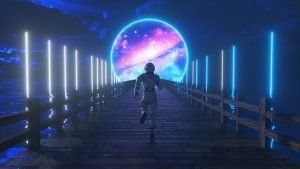
CGI or computer-generated imagery utilizes digital technology effectively to create high-quality artwork easily. It makes use of both dynamic and static images but is most commonly used with 3D computer graphics instead of 2D graphics. This technique allows greater control over computer-generated animations compared to traditional animation methods.
CGI or 3D animation involves modeling objects, providing structure and skeleton to 3D figures, and rendering the final animation. In contrast, animation that makes use of 2D computer graphics requires the use of computers but is not computer generated.
3D graphics can be used with real-life physics to create ultra-realistic objects and characters. 3D computer graphics do not use any real-life assets and can easily be reshaped, resized, rotated, or manipulated in other ways. That is why such graphics are often known as digital clay and can be used in various applications such as architectural or engineering programs.
6. Dynamic Painting
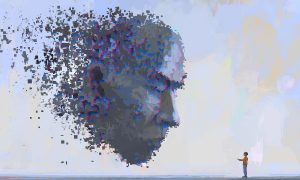
Dynamic painting involves using human data and artificial intelligence to create vivid art pieces that cannot be distinguished from traditional artwork. However, since this depends entirely upon AI, the chances of errors are high in the case of dynamic painting. That is why while some dynamic paintings may be highly impressive, others may be slightly off.
In dynamic art, machines are trained in a variety of different art styles that were originally created by the masters. While landscape paintings are generally impeccable when created using dynamic painting techniques, portraits may not be as impressive. That said, dynamic paintings provide a unique take on the digital art forms available today.
7. Computer-Generated Digital Painting

Artists use digital art software to create environments and backgrounds which can be used as assets for other purposes. Computer-generated digital paintings are highly common these days and are often used to create backgrounds, landscapes, and concept art. This technique is also used to repair photographs and even traditional art pieces.
Similarly, computer-generated digital paintings can be used to create smaller assets, such as weather effects, hair, textures, and surfaces. This digital art form is perfect for creating painted versions of technology and machinery. Generally, such objects are quite difficult to paint using traditional painting methods, which is where this style can come in quite handy.
8. Projection-Mapping
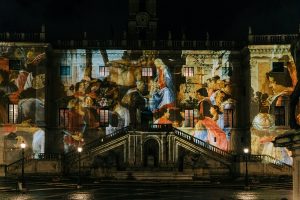
Projection mapping is a digital art style closely related to spatial augmented reality and video mapping. It is a computer-based projection technique used to transform irregularly shaped objects into a surface for video projection.
This art technique can be used on a small or a large scale and is used in a variety of situations. It is commonly used in corporate workshops, fashion shows, or even pop-up exhibitions along with permanent installations.
Also, projection mapping is used for mapping buildings and can be used as the focus itself or as a medium for other digital art pieces. This is because it can transform the appearance of an object in real-time by combining computer graphics with videos and still images.
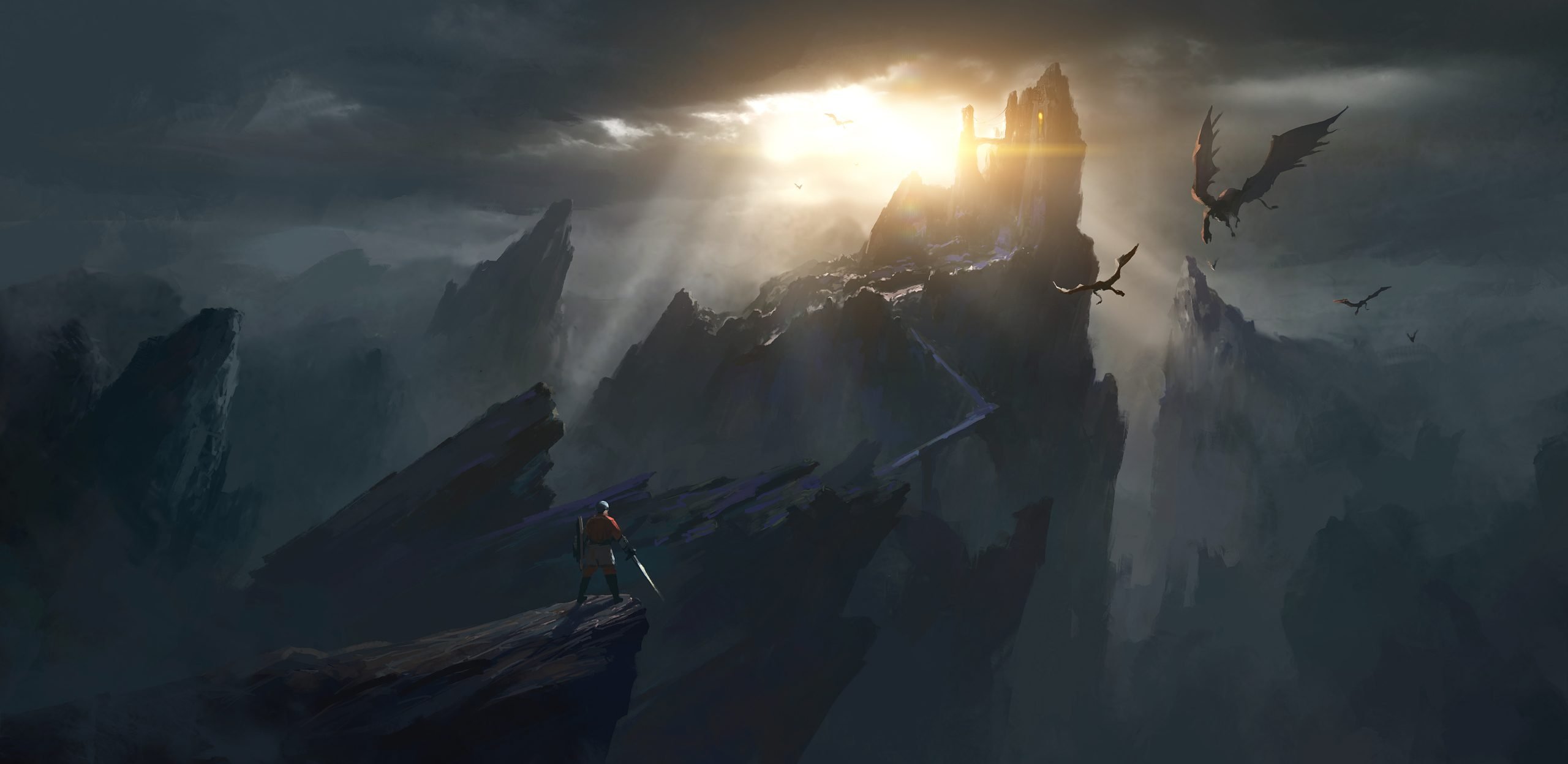
Types Of Digital Art Final Thoughts
Art has been an important part of human history since the very beginning and has evolved considerably over the centuries. And with the changes brought in by technology, the next phase in this evolutionary process has become possible with the development of digital art.
Digital art is a vast field encompassing several art types, and here we’ve mentioned the most common types. The best thing about these art styles is that they can be combined and used together to create visually pleasing and highly impressive pieces.
And the advent of Artificial Intelligence is opening up more opportunities in this field than ever before. But it may be a few years before tools like Dall-E and Midjourney become more widely available.
So until then, regular practice and proper training are the most effective ways of becoming a great digital artist.
Related Articles
16 Best Pixel Art Programs and Software
14 Amazing Free Krita Brushes and Brush Packs for Digital Art
